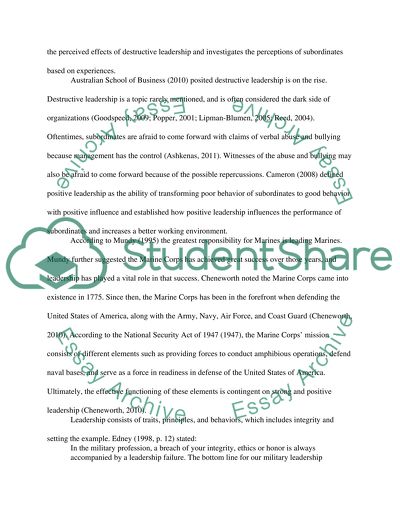Cite this document
(“DESTRUCTIVE LEADERSHIP IN THE MILITARY: A QUALITATIVE INVESTIGATION Essay”, n.d.)
Retrieved from https://studentshare.org/military/1400618-destructive-leadership-in-the-marine-corps
Retrieved from https://studentshare.org/military/1400618-destructive-leadership-in-the-marine-corps
(DESTRUCTIVE LEADERSHIP IN THE MILITARY: A QUALITATIVE INVESTIGATION Essay)
https://studentshare.org/military/1400618-destructive-leadership-in-the-marine-corps.
https://studentshare.org/military/1400618-destructive-leadership-in-the-marine-corps.
“DESTRUCTIVE LEADERSHIP IN THE MILITARY: A QUALITATIVE INVESTIGATION Essay”, n.d. https://studentshare.org/military/1400618-destructive-leadership-in-the-marine-corps.


